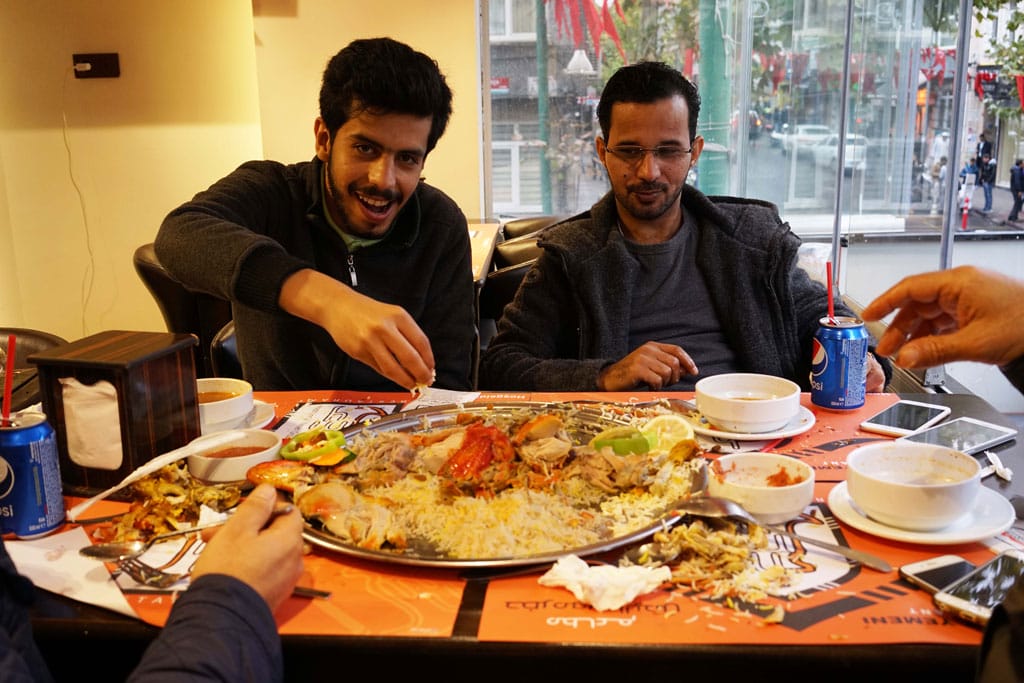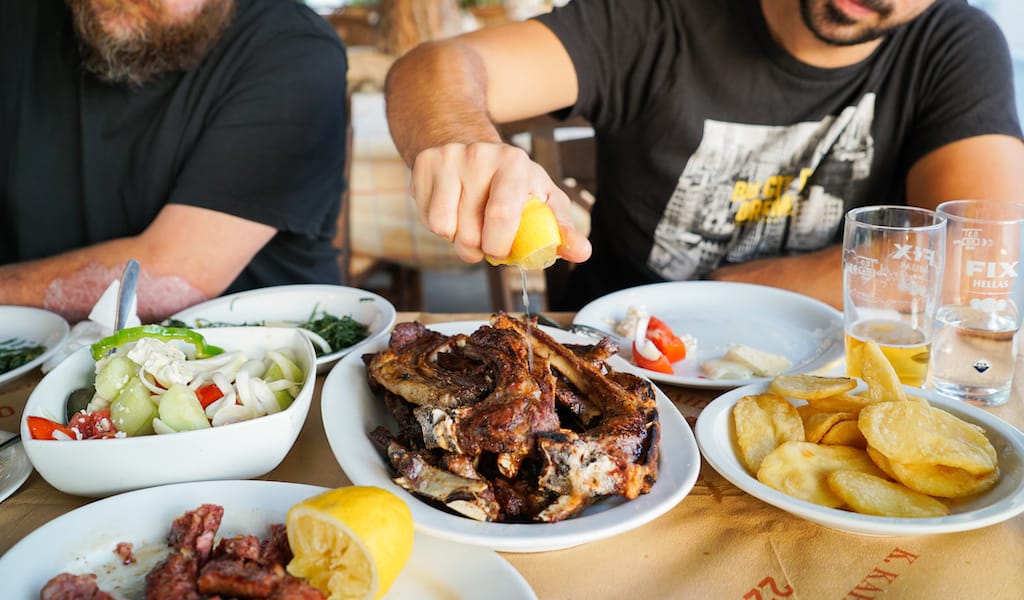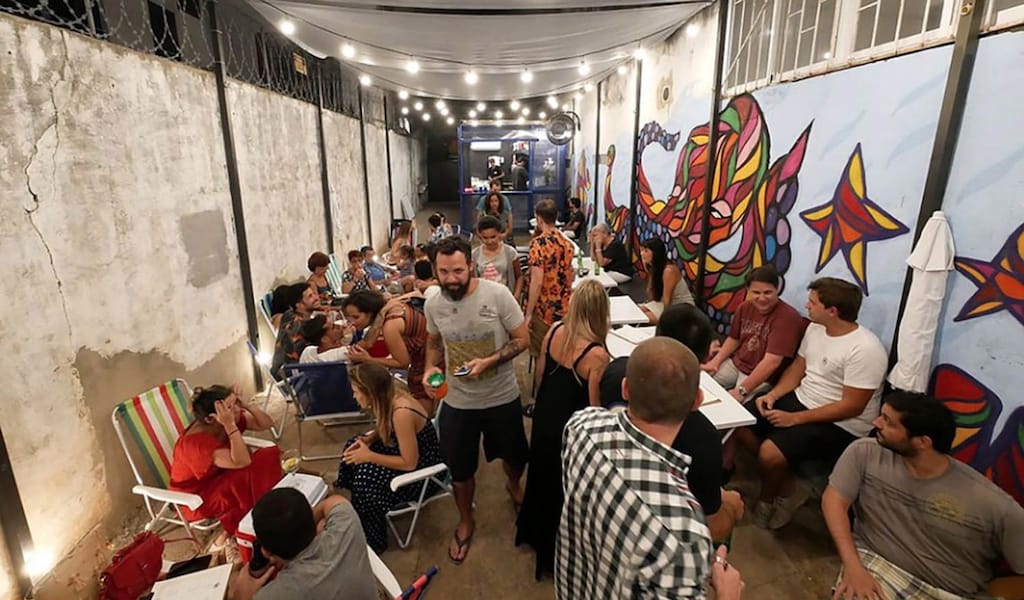Istanbul’s conservative Fatih district has perhaps the highest concentration of Syrian refugees in the city, and the tree-lined Akşemsettin Street boasts a staggering number of Syrian eateries, from spacious sit-down affairs with full menus to hole-in-the-wall, standing-room-only kiosks slinging shawarma, fried chicken, and falafel.
Having popped up rapidly amid the waves of Syrians fleeing the devastating civil war that has displaced more than half the country’s population, these establishments have made a firm imprint on the culinary scene. While the falafel at many of these places is a mediocre afterthought overshadowed by the more popular poultry-based items, we found one counter offering falafel and falafel only, serving up a generously crafted sandwich the size of a chubby child’s forearm for a measly TL 2.50 (US$0.75). The plump spheres of mashed chickpeas and spices were fried to order and laced with hummus and a hot red pepper sauce. We were astonished at how long we stayed full on mere pocket change.
While chomping into our falafel one afternoon, we noticed another newcomer directly across the street. Rather than another addition to the local Syrian cuisine scene, what lay ahead was Hadramot Yemen restaurant. A different beast entirely, Yemeni food forgoes falafel, ful and fattoush for heavily spiced stews and roast lamb, which is precisely what we opted for during our first visit to Hadramot.
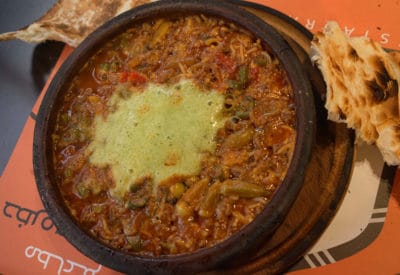 Welcomed by Ahmed, the friendly manager who just arrived in Istanbul weeks ago, we started off with mint lemonade freshly prepared at the flashy, well-stocked juice bar on the restaurant’s ground floor. Nuclear green from the pulverized mint leaves within, the drinks were a refreshing complement to the intensely hearty dishes that were to come. We proceeded to order salteh, perhaps the national dish of Yemen. It’s known to be eaten to ensure a full stomach before the consumption of qat, a leaf that causes an amphetamine-like high when chewed and is extremely popular in Yemen, where more conventional substances like booze are banned.
Welcomed by Ahmed, the friendly manager who just arrived in Istanbul weeks ago, we started off with mint lemonade freshly prepared at the flashy, well-stocked juice bar on the restaurant’s ground floor. Nuclear green from the pulverized mint leaves within, the drinks were a refreshing complement to the intensely hearty dishes that were to come. We proceeded to order salteh, perhaps the national dish of Yemen. It’s known to be eaten to ensure a full stomach before the consumption of qat, a leaf that causes an amphetamine-like high when chewed and is extremely popular in Yemen, where more conventional substances like booze are banned.
Out came a sizzling shallow clay pot with a foundation of rice and ground beef surrounded by chopped morsels of okra, peppers, tomatoes and potatoes. Sitting atop the mouth-burning affair was a sea foam green pool of ground fenugreek mixed with herbs, the sharp treble to the dish’s booming bass of meat and starch. Notes of spice recalled Indian stews. “They are the same!” Ahmed exclaimed enthusiastically when we asked him about the culinary similarities between Yemen and India. The two countries are separated only by the Arabian Sea. There might be some hyperbole in his answer, but the common ground is undeniable, the fresh, chewy flat bread that we dunked in our salteh bore a striking resemblance to naan.
Up next was the lamb, served over a platter of saffron rice speckled with golden raisins and cashews. The lamb was exquisite, falling triumphantly off the bone with a perfect layer of char on the outside. We looked on enviously as the table behind us tucked into a plate of roast chicken, but acknowledged that we were full to the brim and would have to save that for another visit.
Downstairs was a shawarma station, but Ahmed said that it catered to Syrian customers. “We have shawarma in Yemen, but it’s not very good,” he said with a chuckle. We’ll stick to the specialties at Hadramot, one of two Yemeni restaurants owned by the businessman Adel M. Saleh Al-Samadi. We asked Al-Samadi if there was a burgeoning Yemeni diaspora community, and he told us that there were perhaps only 50 Yemenis living in the city.
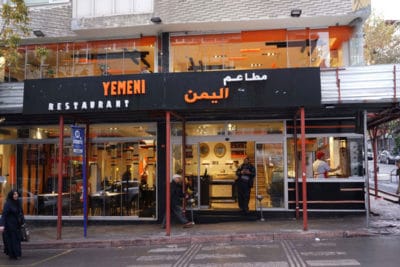 As the country has become engulfed in war, most have not been as lucky as Ahmed to find stability and employment in Turkey. But Yemeni restaurants are likely to do well in Istanbul, as the cuisine is popular in Saudi Arabia, and Saudis constitute one of the last groups of faithful tourists still coming to the city in large numbers.
As the country has become engulfed in war, most have not been as lucky as Ahmed to find stability and employment in Turkey. But Yemeni restaurants are likely to do well in Istanbul, as the cuisine is popular in Saudi Arabia, and Saudis constitute one of the last groups of faithful tourists still coming to the city in large numbers.
We were too sheepish to ask Ahmed and his colleagues if they had a qat connection so we could follow up our salteh feast in style, but we left satisfied regardless. Hadramot adds to the growing culinary diversity in Istanbul, which continues to shed its reputation as a city lacking it. Akşemsettin Street is a suitable destination for those in search of a good falafel or Syrian coffee, and Yemeni food is the latest player to emerge on the ever-evolving scene.
A tip: give the salteh a few minutes to breathe. You’ll be scorched otherwise.
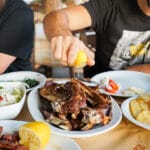 August 1, 2022 Trigono: Grilled Meat Detour
August 1, 2022 Trigono: Grilled Meat Detour
The typical after-beach taverna in Greece almost always focuses on fish. You want to sit […] Posted in Athens August 28, 2018 Titú
August 28, 2018 Titú
When we first entered Titú, a new spot in the trendy Botafogo neighborhood, our mind […] Posted in Rio August 15, 2022 CB on the Road: A Tale of Two Ceramicists
August 15, 2022 CB on the Road: A Tale of Two Ceramicists
Amanda Tong’s hands are grey with liquid porcelain as she slowly shapes a small pitcher […] Posted in Tokyo
Published on November 22, 2016
Related stories
August 1, 2022
Athens | By Katherine Whittaker
AthensThe typical after-beach taverna in Greece almost always focuses on fish. You want to sit seaside, still a little salty from your swim, watching the last rays of the day’s sunshine drip into the sea. It’s certainly a beautiful image, and very typically Greek. Most of the time, a day trip to the beach does…
August 28, 2018
RioWhen we first entered Titú, a new spot in the trendy Botafogo neighborhood, our mind immediately went to SpongeBob SquarePants, oddly enough, or more specifically, the Krusty Krab, the diner where SpongeBob works as a fry cook. Like the Krusty Krab, this recently opened bar specializes in seafood burgers – when we popped our head…
August 15, 2022
Tokyo | By Florentyna Leow
TokyoAmanda Tong’s hands are grey with liquid porcelain as she slowly shapes a small pitcher on her potter’s wheel. Marbled clay rises and flattens under her strong hands, larger than you’d expect from her slight stature. Behind her, Jun Matsumura scrapes tendrils of clay off a partially-dried vessel, sharpening its elegant curves. Cantonese pop music…







































